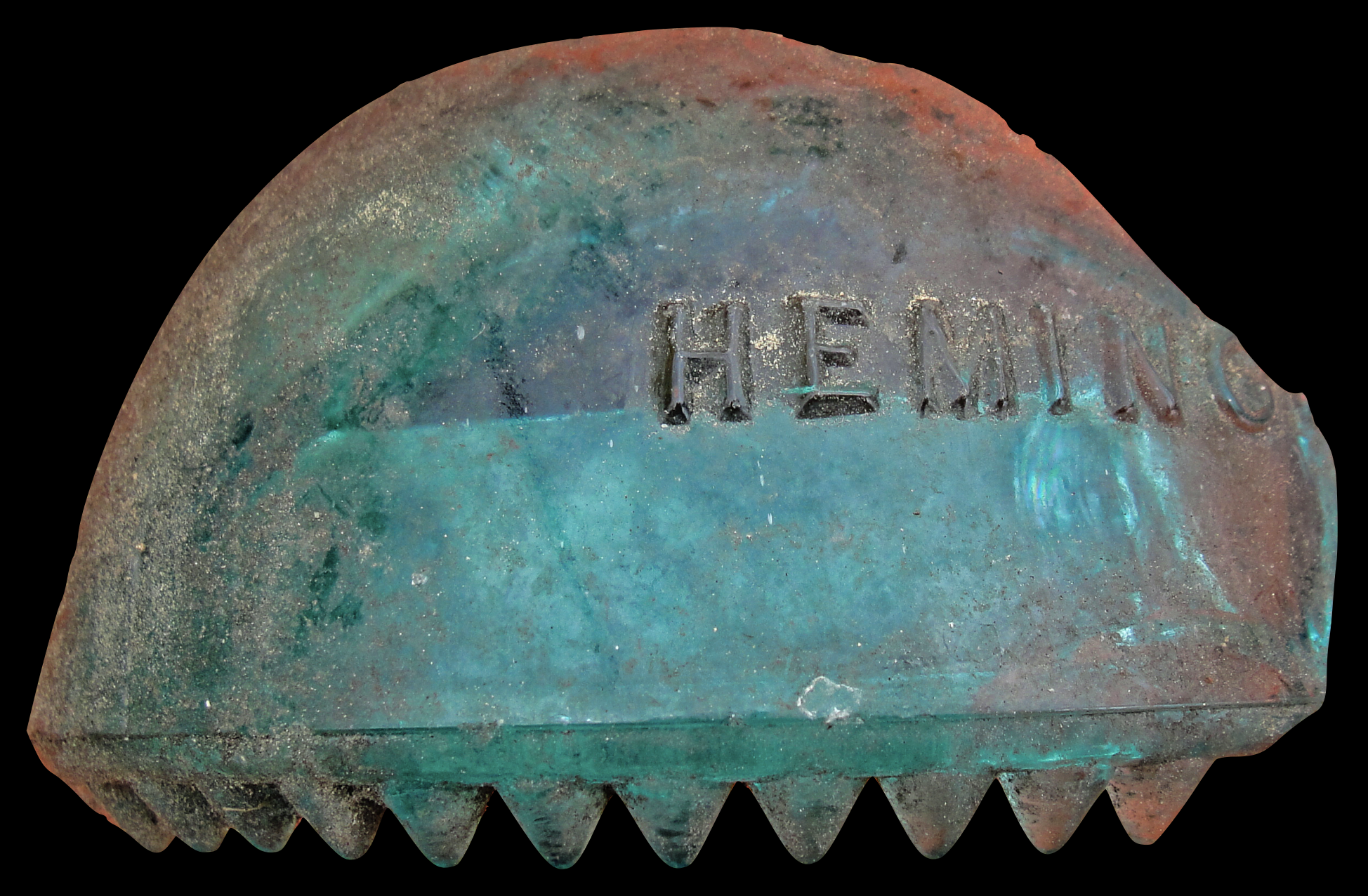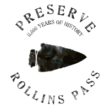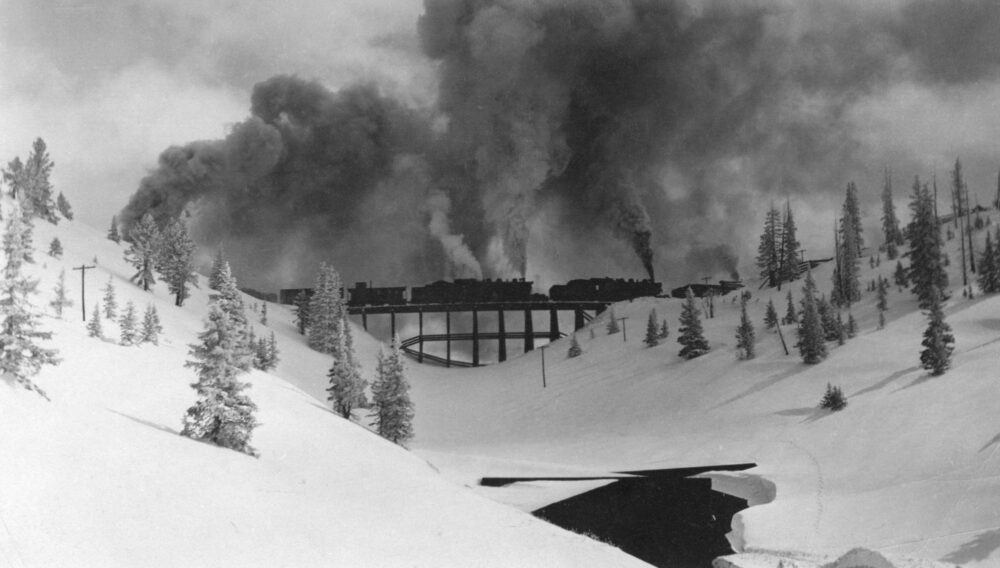Turn the Page
Turn the page on how you view the vast history and prehistory of Rollins Pass.
“History is not the story of strangers… it is the story of us had we been born a little earlier,” wrote Stephen Fry. The many stories of the pass depict life as it was for generations past. Imagine the thousands who were part of the 12,000 years of history on Rollins Pass.
The images and stories of the past are brought into sharp relief with modern photography of the present. It is our intention that our books serve as handheld time machines: allowing instant transportation to any area on the pass and to view modifications made to the landscape—or sometimes, no changes at all. The reader can see in a single page what was once a thriving town become a grassy field in the course of a single century. For Rollins Pass, however, time is a resource found in abundance and the pass itself is patient: some artifacts were fashioned fifty-five centuries before the invention of the wheel, sixty-four centuries before the construction of the Pyramids of Giza, and seventy-three centuries before the creation of the first alphabet.
The storied history of Rollins Pass is made accessible through three primary resources. The first resource is the written word: some were penned in diaries, books, and memoirs; others printed in period newspapers. History is brought to the front page of the modern age when words written by John Quincy Adams Rollins, C.A. Deane, Commodore Decatur, Charles Zarlengo, Leda Reed, and others can be read tens of decades later. Newspaper articles and books may have word count limitations; however, it does not always take 1,000 words to describe a picture. For example, a picture-less mention was made in the August 31, 1916, Moffat County Courier: “A passenger on the Moffat road last Tuesday stood on the rear platform and took a picture of Yankee Doodle lake; and as it was raining, he secured a picture of a rainbow circled just above the lake.” The photograph has not been located, yet it can almost avoid discovery in its obscurity: the words leave even more to the imagination.
There are words that, thankfully, exist without a photographic counterpart. The Moffat County Courier on December 13, 1917, relayed macabre news of an avalanche that swept a rotary snowplow and assisting engine 150 feet off of the track. This derailment resulted in immediate deaths and serious injuries of the crew, “J.I. Snyder, engineer of the assisting engine, was scaled about the head so badly that the bones of the face were exposed and he is not expected to live.”
Words have the power to inspire, more than a century later: ordinary text was impressed, in relief, on a 230-pound solid silver cup with marble base, as was presented to David Moffat to commemorate his “ability, integrity and remarkable enterprise and foresight, together with his kindliness and generosity.” This magnificent cup of appreciation contains an inscription, “this tribute… will remain an inspiration for all the years to come.” Those words ring true—this incredible artifact from 1904 was unveiled to the public in 2019 at Denver’s Union Station, standing on display as a silent historical custodian over the rails that ultimately lead west, through the Moffat Tunnel. Words provide subtitles to an otherwise silent history: voices from the past help others understand this unique site nestled in the Southern Rocky Mountains of north-central Colorado.
The next resource are aging photographs. Images transport both authors and readers backward through time in an instant, allowing the predictable plod of time to be toyed with—watch as buildings, towns, and ways of life are created, then leveled with the flip of a page. Witness steel railroad tracks give way to a ribbon of dusty—or snowy—road that undulates across the mountains and valleys comprising Rollins Pass. View familiar sights along with newly built structures for the first time, for they were truly only created moments ago, or grimace alongside workers in a brutal icy wind, all from the comfort of a living room chair.
Photographs, including motion pictures, succinctly tell a story of their own: yet represent only a literal snapshot from a specific time and in a certain place. Whereas words can describe a structure that may be miles in length, such as the description John Rollins provided of the Native American rock walls; a photograph has limitations to tell such a story with exquisite detail and focus. Collections held by museums, historical associations, and preservation commissions can help reveal mysteries. For example, there indeed was a roundhouse in Tolland: photographs exist, both before as well as after, showing it had been “completely destroyed by fire” in 1910 as was reported in numerous newspaper articles.
The final resource is the arduous research and fieldwork performed by professional archaeologists. Their efforts help bond and further enhance the prior two resources: photographs and words become imbued with both deep context as well as historical meaning. Archaeology provides the why to the story that is so important to understanding, enriching, and unlocking the mysteries of the past. Whereas much is known about the railroad, there is still much to be learned from the abandoned can dumps, wrecks, and other historic debris that did not make it into newspaper articles, books, company records, or photographs. As for the Native American record on Rollins Pass, that simply cannot be known through any other means but archaeology. Please don’t pocket the past.
Why were game drive complexes placed atop Rollins Pass so long ago and why are they recognized to be internationally significant? Why does sun-colored amethyst glass turn purple when exposed to ultraviolet light and why is that important to understand the habits and products consumed by those who lived at a site? Archaeology helps bring into focus the lives of historical and ancient peoples—knowing why is crucial to fully appreciating the story of the pass.
What remains is for the reader to carefully stitch together all the above resources to craft an enduring tapestry: combine text, images, and archaeology from within our books to transform subsequent visits to the pass. Ensure these fragile stories are shared widely; while guaranteeing artifacts extend their influence into the future by remaining in place when and where they are found. Encourage and protect local history, cherish non-renewable historic sites on and near Rollins Pass that have been listed as Colorado’s Most Endangered Places, and enjoy a rediscovered appreciation for the history made long ago along with the more modern efforts to define resources on the pass as being listed on, or eligible for, the National Register of Historic Places. The responsible tourist takes care of the pass and its rich history for the next generation by respecting leave no trace principles.
While the second half of Stephen Fry’s quote was provided above; the first half is, “How can we understand our present or glimpse our future if we cannot understand our past? How can we know who we are if we don’t know who we were?” Turn the page.

following leave no trace principles, this artifact was field-photographed and left behind on Rollins Pass for the next generation to re-discover
The primary purpose of our work is to inform the public.

